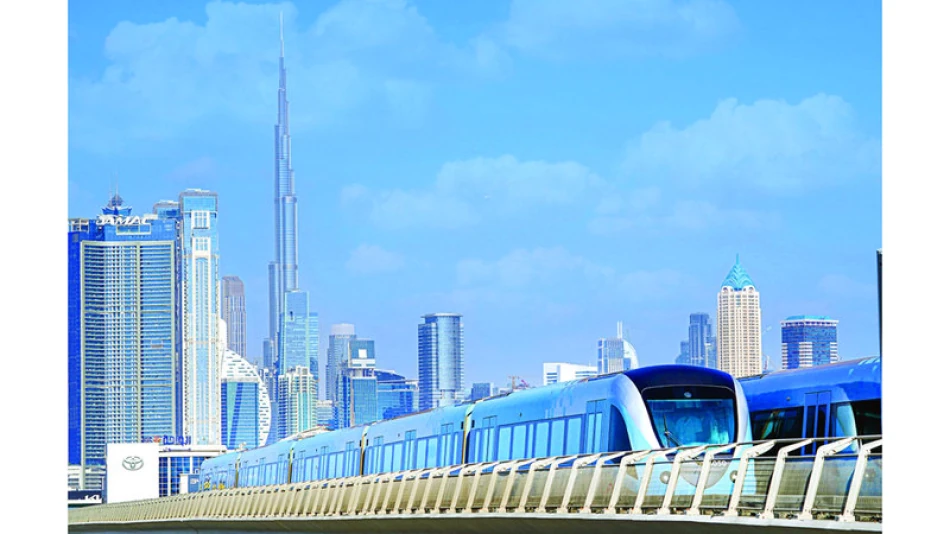
Dubai's Public Transport Carries 395M Passengers in 6 Months, Showcasing City's Connectivity
Dubai's Public Transport Ridership Surges 9% as City Doubles Down on Green Mobility
Dubai's ambitious push toward sustainable transportation is paying dividends, with public transport ridership climbing to 395.3 million passengers in the first half of 2024—a 9% jump from the previous year. The surge reflects not just economic recovery, but a fundamental shift in how residents and visitors navigate the emirate, as Dubai races toward its 2050 goal of a fully electric and hydrogen-powered bus fleet.
Metro and Taxis Lead the Charge
The Dubai Metro dominated passenger volumes, capturing 36.5% of all ridership with 143.9 million passengers across its Red and Green lines. Taxis followed closely at 26%, while public buses accounted for 24% of journeys. This distribution signals Dubai's success in creating an integrated transport ecosystem that appeals to diverse user groups—from daily commuters to tourists exploring the city's landmarks.
Peak usage hit 68.8 million passengers in May alone, with monthly figures consistently ranging between 61-68 million throughout the period. The daily average reached 2.18 million passengers, up from 1.98 million in 2023, indicating sustained momentum rather than seasonal spikes.
Busiest Stations Reveal Urban Patterns
Station-level data offers insights into Dubai's evolving urban geography. Burjuman and Al Rigga emerged as the top interchange hubs, handling 8.6 million and 6.8 million passengers respectively. On the Red Line, Mall of the Emirates led with 5.6 million users, followed by Burj Khalifa/Dubai Mall at 5.4 million—underscoring the metro's role in connecting residents to major retail and tourism destinations.
Infrastructure Expansion Accelerates
Dubai's transport chief Mattar Al Tayer announced that shared mobility options now account for 21.6% of all trips, a dramatic increase from just 6% in 2006. This transformation reflects substantial infrastructure investments, including the ongoing Blue Line metro project spanning 30 kilometers with 14 stations serving nine districts housing an estimated one million residents by 2040.
The emirate has also committed to purchasing 637 new buses meeting Euro 6 emission standards, including 40 electric buses—the largest such order in the UAE. These vehicles, arriving in 2025-2026, will expand geographic coverage while supporting Dubai's pledge to achieve 100% electric and hydrogen bus operations by 2050.
Regional Leadership in Transit Innovation
Dubai's public transport growth mirrors broader regional trends, but with notable distinctions. While Singapore achieved similar modal shift percentages over decades, Dubai compressed this transformation into less than two decades. The UAE's oil wealth allows for aggressive infrastructure spending that smaller Gulf states cannot match, positioning Dubai as a regional hub for sustainable mobility innovation.
Unlike car-centric cities such as Riyadh or Doha, Dubai's early metro investment created network effects that encourage continued ridership growth. The 9% increase comes despite global inflation and economic uncertainty, suggesting that convenience and reliability matter more than cost for Dubai's diverse population.
Economic and Environmental Implications
The ridership surge carries significant implications beyond transportation. Higher public transit usage reduces traffic congestion, supporting Dubai's position as a business hub where mobility efficiency directly impacts productivity. For real estate investors, proximity to metro stations increasingly drives property values, creating new urban development patterns.
From an environmental perspective, the shift toward public transport and electric vehicles aligns with the UAE's net-zero commitments, though Dubai's extreme summer heat and sprawling geography present ongoing challenges. The success of the current system provides a foundation for more ambitious climate goals, particularly as the city prepares to host COP28 outcomes and demonstrate regional climate leadership.
The 9% ridership increase signals that Dubai's transport transformation has reached a tipping point—moving from infrastructure-led growth to demand-driven expansion that could reshape urban mobility across the Gulf region.
 Sara Khaled
Sara Khaled







